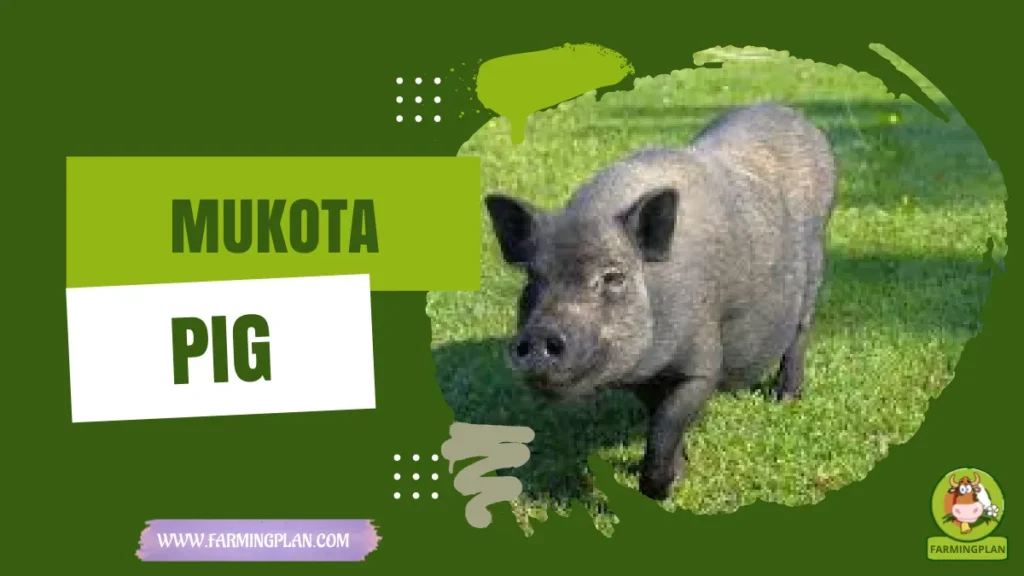If you’re anything like me, you’ve probably been drawn to animals with personality and good looks. Well, the Argente Blue Rabbit fits that bill perfectly. With its soft, silky coat that glimmers with silvery-blue charm and a calm, friendly personality, it’s no wonder why this breed has become a popular choice among pet owners and breeders. Whether you’re raising rabbits on a small homestead or looking for a cuddly, low-maintenance pet, the Argente Blue Rabbit checks a lot of boxes. In this guide, I’ll walk you through everything I’ve learned about them—from their fascinating history to their everyday care. So, let’s hop right in.
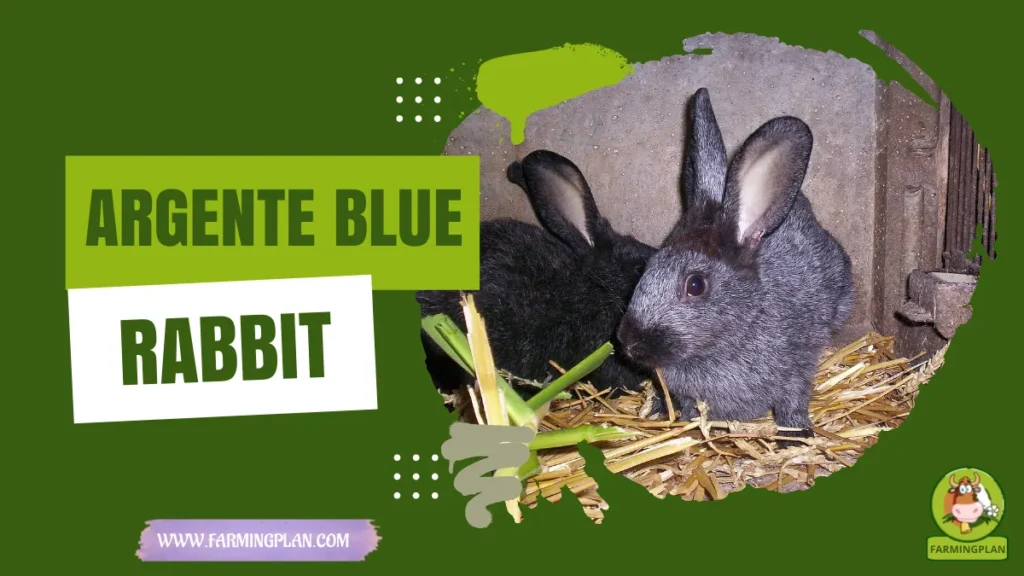
History & Origin of Argente Blue Rabbit
The roots of the Argente Blue Rabbit go all the way back to France in the 17th century. This breed belongs to the d’Argent family—a group of rabbits bred for their beautiful silver-tipped coats. These rabbits gained popularity at French livestock shows and were especially prized for their unique appearance and commercial value.
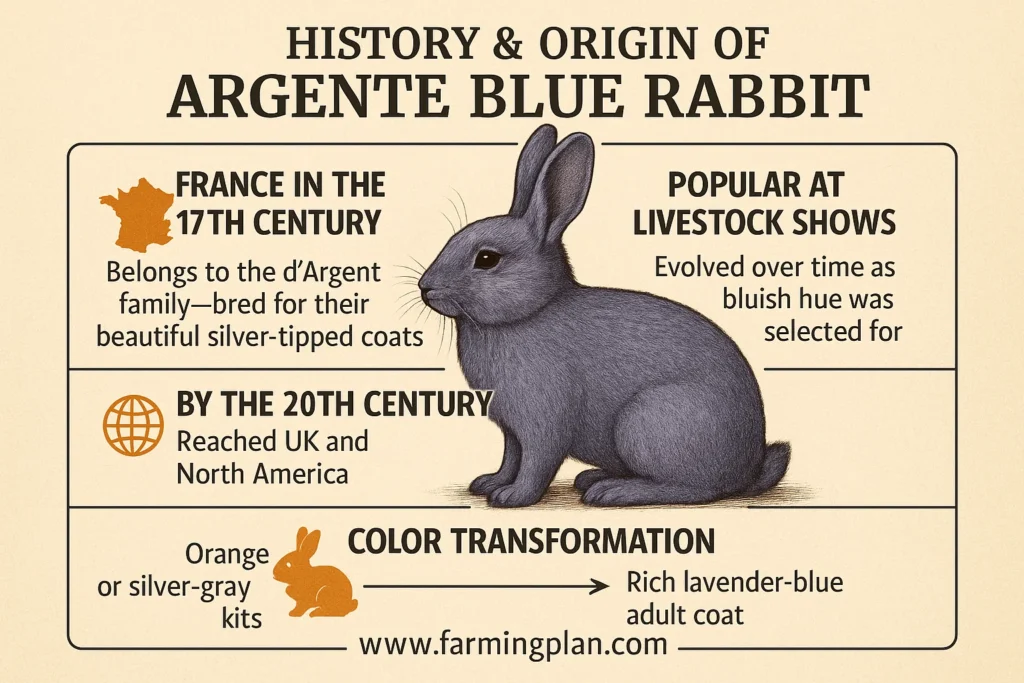
The Argente Blue, in particular, evolved over time as breeders selected for the bluish hue in the coat, distinguishing it from cousins like the Argente Brun or Champagne d’Argent. By the 20th century, it made its way to the UK and eventually North America. American breeders admired its color transformation—from the orange or silver-gray of kits to a rich lavender-blue adult coat. Today, while still somewhat rare compared to other common rabbit breeds, it’s cherished by fanciers and pet lovers alike for its gentle nature and show-stopping coat.
Read More: Gotland Rabbit: Swedish Variety of Bunny
Characteristics of Argente Blue Rabbit
What truly sets the Argente Blue Rabbit apart is its silvery-lavender coat. As kits, their coats are more orange or gray, but around 5–6 months, the color transforms into a stunning blue with shimmering silver tips—thanks to dense guard hairs. It’s like witnessing a magical transformation in nature!
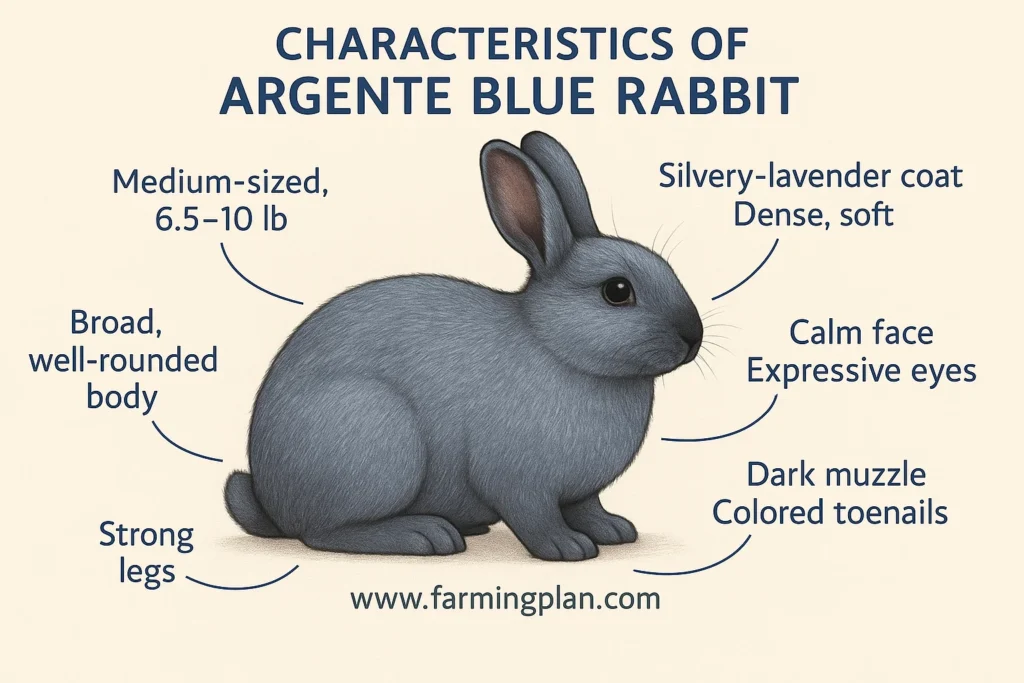
They are medium-sized rabbits, generally weighing between 6.5 to 10 pounds, making them manageable for most homes and hutches. The coat is dense, soft, and requires regular brushing to maintain its glow.
Other features include:
- Broad, well-rounded bodies
- Dark muzzle and colored toenails
- Strong legs that help them stay active
- A calm face with expressive eyes
The Argente Blue shares similarities with its cousins—the Argente Brun Rabbit with its chocolate coat and the Argente Creme Rabbit with its creamy silver coloring—but the unique blue-silver coat keeps this one in a league of its own.
Read More: Angora Rabbit: Expert Guide to Soft Fiber
Nature & Temperament of Argente Blue Rabbit
Argente Blues are sweet-natured and relatively low-maintenance in behavior. They’re calm and cuddly, yet still curious enough to hop around and explore their surroundings. Their energy level is not as high as some giant rabbit breeds, which makes them easier for first-time rabbit owners to handle.
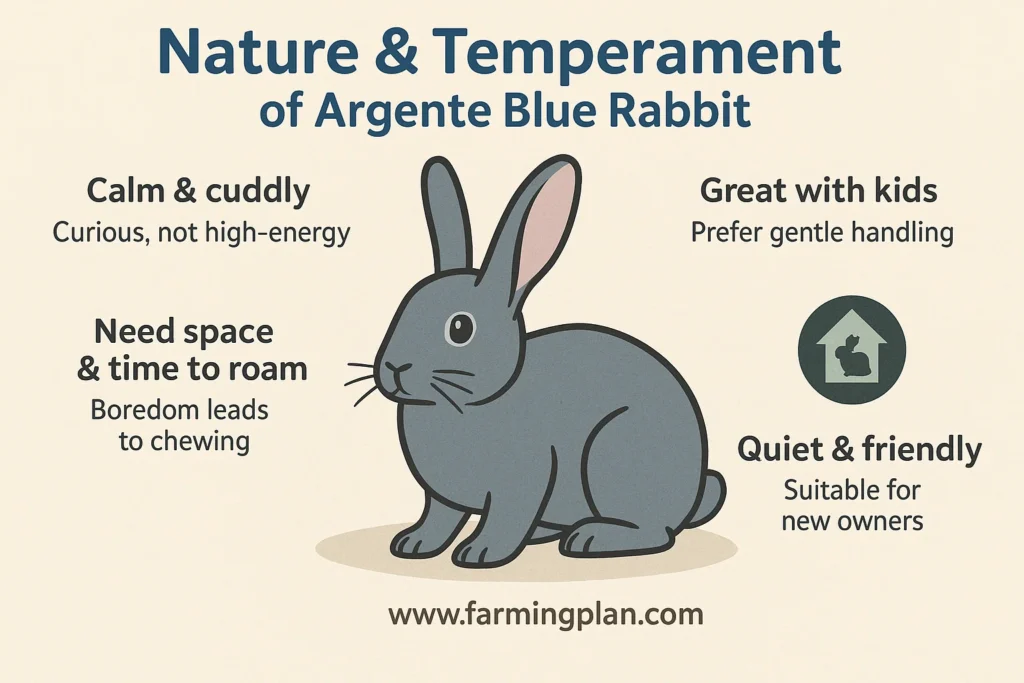
They’re also great with kids, as long as the kids are gentle. These rabbits don’t enjoy rough handling, but they’ll happily snuggle on a lap or follow you around if they trust you. Make sure they have plenty of space and time to roam safely—boredom leads to chewing and other naughty behaviors. Their temperament makes them ideal for small farms, suburban homes, or even apartments (with supervision). They’re quiet, friendly, and not known to be aggressive. Just keep their minds and bodies stimulated!
Every Silvery Strand On An Argente Blue Tells A Story Of Beauty, Grace, And Gentle Charm.
Food & Diet
Feeding Argente Blue Rabbit isn’t rocket science, but it does need to be consistent and clean. I always start with high-quality hay—that should make up about 80% of their diet. Timothy, meadow, or orchard hay are all solid choices.
Here’s what else I give them:
- A cup of fresh produce daily—think leafy greens like kale, romaine, or parsley
- 1/4 cup of high-fiber pellets (avoid those with added seeds or sugars)
- Fresh water 24/7 (I use a bottle and a ceramic bowl—just in case one spills)
Avoid:
- Iceberg lettuce (it can cause digestive upset)
- Too many sugary fruits (as treats only)
- Anything moldy or treated with pesticides
And remember to check their weight—an overweight rabbit is more prone to sore hocks and other issues.
Usage & Purpose
The Argente Blue Rabbit has a few popular purposes. First and foremost, they’re excellent pet rabbits—their calm demeanor and manageable size make them great for families, seniors, and even schools.
In the show world, they’re one of the French show rabbit breeds that judges love. Their coat quality, body shape, and coloration earn them plenty of ribbons. Some farmers also raise them for commercial rabbit farming, though less often than the Champagne d’Argent. Their dense coat and solid meat-to-bone ratio make them suitable for that purpose too. That said, most folks keep them because they’re adorable, affectionate, and low-fuss.
Read More: Amazing Altex Rabbit: The Ultimate Meat Bunny Choice
Special Features
Here’s what makes the Argente Blue truly special:
- Color Transformation: Kits change from orange or silver-gray to a dazzling blue coat as they age.
- Guard Hairs: These long hairs give that silver sparkle, making them a standout in any hutch.
- Low Odor: Compared to other breeds, they tend to smell less when kept clean.
- Gentle Personality: Not skittish or overly hyper. They’re ideal companions for calm households.
- Colored Toenails: A subtle trait, but one that show judges and breeders appreciate.
Whether you’re a breeder looking for show potential or a pet lover wanting a chill companion, the Argente Blue brings a little something extra to the table.
Health Issues & Prevention
Just like any breed, the Argente Blue Rabbit can run into a few common issues. The good news? Most are easy to prevent with good care.
Here’s what I watch for:
- Ear mites: They love hiding in those floppy ears. I check weekly and clean with a soft cloth and rabbit-safe solution.
- Sore hocks: This happens if they’re on wire flooring too much. I always provide soft mats or straw bedding.
- Overgrown teeth or toenails: Chewing hay and regular nail trims are a must.
- Obesity: It sneaks up on them if they don’t get enough exercise.
I also recommend:
- Annual vet checks
- Keeping hutches clean and dry
- Providing chew toys and enrichment
With these steps, your Argente Blue can live a long, healthy life—often 8 to 12 years or more.
Step-by-Step Pet Owner Care Guide
Raising an Argente Blue Rabbit is a rewarding journey, filled with soft snuggles, curious hops, and gentle companionship. But to keep these silvery sweethearts healthy and content, you’ll need to follow a few key steps. Whether you’re a first-time rabbit owner or adding one more to your bunny family, here’s your easy-to-follow guide for day-to-day care.
Step 1: Set Up A Safe, Comfy Home
Start by giving your Argente Blue a cozy, secure space to call their own. A hutch or indoor pen should be at least 4 feet long by 2 feet wide, with enough headroom to stretch and hop comfortably.
Flooring: Avoid wire bottoms—they can cause sore hocks. Instead, line the floor with solid material and top it off with soft bedding like straw, paper-based bedding, or aspen shavings.
Essentials to Include:
- A litter box with rabbit-safe litter (no clay or clumping)
- A hidey house for when they need some peace and quiet
- Chew toys and wooden blocks to keep teeth in check
- A hay rack and ceramic food and water bowls
Step 2: Feed The Right Way Every Day
A good diet keeps your rabbit healthy inside and out—especially that lovely lavender-silver coat!
Daily Feeding Schedule:
- Unlimited fresh hay (Timothy, orchard, or meadow hay) — essential for digestion and dental health
- Pellets: 1/4 to 1/2 cup of high-fiber rabbit pellets once daily
- Fresh greens like romaine, parsley, or kale in the evening
- Occasional treats (1–2 times per week): thin apple slices, banana chunks, or blueberries
Tips:
- Always provide clean, fresh water—a bowl and bottle combo works best
- Wash all veggies and remove any leftovers after a few hours
- Avoid iceberg lettuce, sugary treats, or anything processed
Step 3: Keep Up With Grooming
That shimmering coat doesn’t maintain itself! Argente Blue Rabbit have a dense, silky coat that needs regular brushing to stay neat and healthy.
Grooming Routine:
- Brush 1–2 times per week, daily during shedding season (usually spring and fall)
- Use a soft-bristle brush or small pet comb
- Trim nails every 3–4 weeks or when you hear clicking on the floor
- Check ears weekly for mites or dirt buildup
- Look for tangles, dry patches, or sore spots, especially around the hind legs
A little pampering goes a long way—and most rabbits grow to love grooming time when it’s gentle and positive.
Step 4: Handle With Care
Argente Blues are calm and sweet, but like all rabbits, they can be startled if not handled properly.
How to Lift Safely:
- Support their chest with one hand and their bottom with the other
- Never lift by the ears, scruff, or legs
- Hold them close to your body to make them feel secure
Bonding Tips:
- Sit on the floor and let them come to you
- Offer a treat while you talk to them gently
- Be patient—daily short sessions work better than forced cuddles
- Over time, you’ll notice they’ll hop up to you, follow you around, or even nudge your hand for pets!
Step 5: Keep Them Active & Happy
Bored bunnies become destructive bunnies. Argente Blues may be mellow, but they still need daily activity to stay healthy and happy.
Exercise Tips:
- Let them free roam indoors (supervised) or have access to a secure outdoor pen
- Provide enrichment toys: tunnels, chew sticks, cardboard boxes, paper towel rolls
- Rotate toys weekly to keep their interest
- Set up a simple bunny obstacle course with cushions, boxes, and ramps
Physical play keeps their muscles strong, prevents obesity, and reduces boredom-related behaviors like chewing furniture or cage bars.
Step 6: Stay On Top Of Health
Regular health checks help catch small problems before they become big ones.
Weekly Wellness Checklist:
- Eyes: Clear, bright, no discharge
- Nose: Dry and clean
- Ears: No crust, mites, or strong odors
- Teeth: No overgrowth or misalignment
- Fur: Smooth, no bald patches or signs of parasites
- Droppings: Round, firm pellets (no soft or sticky poop)
- Behavior: Alert, eating well, moving normally
Clean their living space at least twice a week, with full sanitation once a month. Keep an eye out for changes in eating, droppings, or energy level—those can signal a vet visit is needed.
Expert Tips & Best Practices
- Always provide shade in warmer months—those dense coats trap heat.
- Introduce new foods slowly to avoid tummy upsets.
- Bond them with another rabbit if possible—they’re social!
- Join a rabbit club like the Argente Brun Rabbit Club or your local rabbit fanciers group.
- Use a brush with soft bristles to avoid hurting their delicate skin.
Tip: A clean hutch is a healthy hutch. It takes 10 minutes a day but saves hours of vet visits.
FAQ
Are Argente Blue Rabbits good for beginners?
Yes! They’re calm, friendly, and low-maintenance—great for first-time rabbit owners.
How much do Argente Blue Rabbits weigh?
They typically weigh between 6.5 to 10 pounds.
What’s the lifespan of an Argente Blue Rabbit?
With proper care, they can live 8–12 years.
Can they live with other pets?
Yes, but always supervise interactions, especially with cats or dogs.
How do I find one for sale?
Check with local breeders, rabbit shows, or sites listing Argente Brun Rabbit for sale—some also offer Argente Blues.
Conclusion
Raising an Argente Blue Rabbit has been one of the most rewarding parts of my small farm journey. These rabbits are beautiful, easy to care for, and have personalities that melt your heart. Whether you’re looking for a loyal pet, a new show winner, or just a charming addition to your animal family, the Argente Blue is a breed worth considering. With the right setup, a little daily care, and lots of love, you’ll have a happy, healthy companion for years. Got space for one more fuzzy friend? Maybe it’s time you met the magical Argente Blue.

